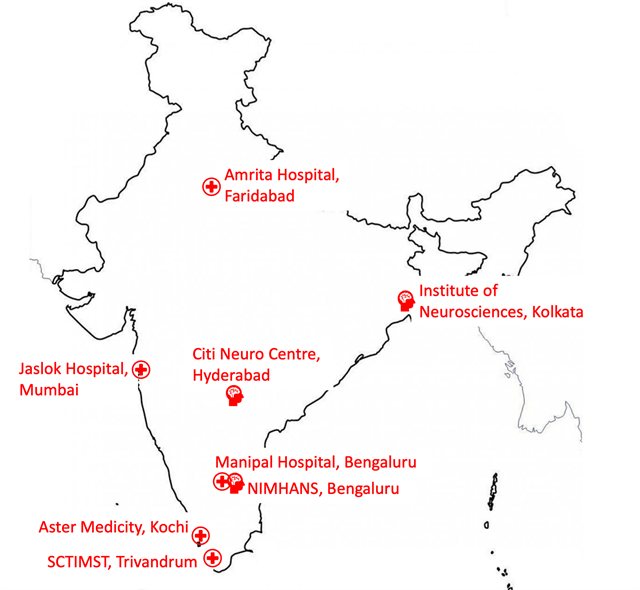 VOLUME 27, ISSUE 2 • JUNE 2023 Full issue »
VOLUME 27, ISSUE 2 • JUNE 2023 Full issue »

The journey of Movement Disorders in India began hundreds of years ago when the ancient texts described ‘Kampavata,’ which may be considered the Ayurvedic counterpart of parkinsonism. Even the therapeutic aspect had a similar scientific basis as Mucuna pruriens, the powdered seeds that were used, have been shown to contain levodopa. The era of modern Movement Disorders started when early pioneers in India took the stage and paved the way for future generations. The world started to notice the contribution of Indian researchers when stalwarts such as Prof. N. H. Wadia published seminal articles on Wilson’s disease (with Prof. D. K. Dastur) and spinocerebellar degeneration. These initial strides were bolstered by other eminent neurologists such as Prof B.S. Singhal, who led the way with his clinical and organizational prowess. He later established the “Parkinson's Disease and Movement Disorders Society of India (PDMDS)” in 2001 and is the patron of the Movement Disorders Society of India (MDSI).
The next phase in the expansion of Movement Disorders in India consisted of the training of Movement Disorder specialists and the commencement of dedicated Movement Disorder centers in India. Several neurologists went for training abroad under some of the global giants in Movement Disorders, and upon returning to India, they established Movement Disorder centers across the country. Thus, movement disorder clinics were actively operating in All India Institute of Medical Sciences (AIIMS) New Delhi, National Institute of Mental Health and Neurosciences (NIMHANS) Bengaluru, Sree Chitra Tirunal Institute for Medical Sciences and Technology (SCTIMST) Trivandrum, Nizam’s Institute of Medical Sciences (NIMS) Hyderabad, and Bangur Institute of Neurosciences (BIN) Kolkata. These top-tier teaching institutes were aptly complemented by well-equipped centers in the private sector spread across India.
The growth of Movement Disorders in India was boosted by the advent of botulinum toxin injection and deep brain stimulation (DBS). In the 1990s, workshops and conferences centered around botulinum toxin injection instilled interest and confidence in neurologists to take up this specialty. At the turn of the century, DBS was introduced in India, and this marked the beginning of a fascinating journey of functional neurosurgery. Coupled with the technical advancements, high-quality research from India made a significant impact with several subsequent national and international collaborations. Indian data on various aspects of movement disorders such as clinical, neuroimaging, genetic, and therapeutic, have considerably enriched the scientific community. To harmonize the efforts of Movement Disorder specialists across the country, to promote education and research, and to spread awareness, the MDSI was formed in 2014. Since then, it has been a driving force for Movement Disorder-related activities in India.
Over the years, the specialty of Movement Disorders gained a strong foothold in India. The senior movement disorder specialists in the country played a leading role in expanding and popularising this branch. Their presence and contribution in the international forum have been exemplary, and have established the increasing impact of India in this field. Interest has steadily grown among young neurologists, and as the next step to learning and pursuing a career in Movement Disorders, many are opting for a fellowship in this subject. While aspirants from India had traditionally looked for opportunities abroad, the situation started to change as leading institutions such as SCTIMST and NIMHANS started fellowship courses in Movement Disorders. This provided the opportunity for the candidates to gain the required expertise from leading experts in India. However, the demand for fellowships in India soon surpassed the opportunities available. To address this issue, several centers in India have initiated fellowship programs in Movement Disorders with internationally renowned experts at their helm (Figure 1). Such programs have widened the scope of learning and provided a platform to launch the next generation of Movement Disorder professionals.
The fellowship programs at centers such as Amrita Institute of Medical Sciences, Faridabad, Delhi NCR, Aster Medicity Kochi, Institute of Neurosciences Kolkata, and Manipal Hospital Bengaluru incorporate various aspects of training in movement disorders, both clinical and research. These consist of learning the proper clinical approach and appropriate investigations, including neurogenetics, electrophysiology, and advanced structural and functional neuroimaging. The fellows also take part in regular botulinum toxin injection sessions. The DBS program in these centers provides necessary exposure regarding patient selection, intraoperative evaluation and MER recording, and DBS programming. The fellows are also involved in various academic activities, including participation in research projects. Most of the fellowship programs in India are one-year in duration and recruit fellows through institutional entrance examinations and interviews following a rigorous selection process. The program directors maintain the highest standards during the fellowship so that the fellows meet the global benchmark of a Movement Disorder specialist after completion of the program. Buoyed by the success of the fellowship programs in India, several of these centers are now enlisted as host sites for the MDS-AOS Visiting Trainee Grant Program. This will allow candidates from outside India to train at these state-of-the-art facilities.
The growth in the number of movement disorder fellows has resulted in a sizeable community of Movement Disorder specialists in India. This has facilitated the availability of specialists for consultations with timely diagnosis and management. This ease of accessibility along with the availability of affordable state-of-the-art therapies has turned India into a hub for ‘international medical tourism.’ The number of centers is also increasing with a larger coverage across the country. However, every year nearly 250 students complete their neurology residency in India. Considering that a substantial proportion of these young neurologists have an interest in a Movement Disorders fellowship, the number of such programs in India seems inadequate. This calls for a prompt increase in the number of centers with a higher intake of fellows each year. It will advance the state of fellowships in Movement Disorders in India toward achieving the desired excellence. This will serve to establish India as a coveted destination for movement disorder fellowship aspirants worldwide.
Read more Moving Along:







